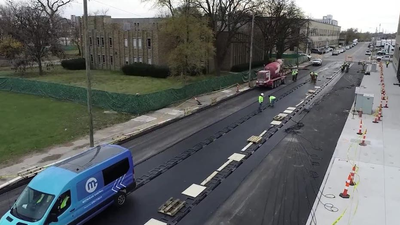
Electric vehicles (EVs) are becoming more popular and affordable, but they still face some challenges, such as limited range, battery size, and charging infrastructure. However, what if there was a way to charge your EV while driving, without the need for plugging in or stopping at a station? That is the idea behind wireless charging.
Wireless charging is a technology that allows electric vehicles (EVs) to receive power from coils embedded under the road surface, without the need for plugging in or stopping at charging stations. This could make EVs more convenient, efficient, and affordable for drivers, as well as reduce the environmental impact of transportation.
Wireless charging has been tested by several automakers and researchers around the world, but until now, no U.S. city had implemented it in a public roadway. That changed when Detroit, the birthplace of the auto industry, announced the installation of wireless charging coils along a quarter-mile stretch of 14th Street in the historic Corktown neighborhood.
The wireless charging system was developed by Electreon Wireless, an Israeli company that specializes in inductive charging technology. The system consists of copper coils that are buried under the asphalt and connected to a power source. When a vehicle equipped with a receiver passes over the coils, it creates a magnetic field that transfers electricity wirelessly to the vehicle’s battery.
The project is a collaborative effort between the State of Michigan and MDOT, the City of Detroit, Michigan Central, Ford, Jacobs, Next Energy, DTE, and others. It is part of a five-year pilot program to test the feasibility and performance of wireless charging in real-world conditions and explore its potential applications for public transit, such as buses and shuttles.
The first vehicle to use the wireless charging system was a Ford E-Transit electric commercial van provided by Ford Motor Co. and equipped with the Electreon receiver. Ford plans to use the vehicle to collect data and provide feedback to the project partners on the efficiency and operations of the vehicle and potential long-term public transportation opportunities.
Wireless charging could offer several benefits for EV drivers and communities at large. Some of the advantages are:
For more of my tech tips & security alerts, subscribe to my free CyberGuy Report Newsletter by heading to Cyberguy.com/Newsletter.
Ask Kurt a question or let us know what stories you'd like us to cover.
Answers to the most asked CyberGuy questions:
CyberGuy Best Holiday Gift Guide
Copyright 2023 CyberGuy.com. All rights reserved.